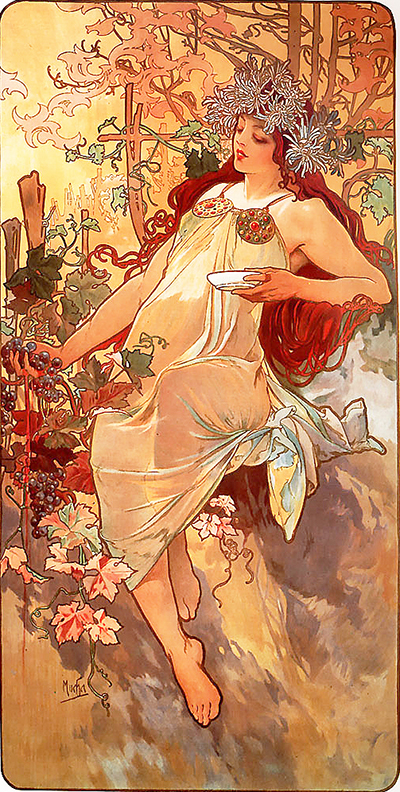Alphonse Mucha created Fall (Autumn) in 1896
This colour lithograph belongs to his first set of decorative panels: a series of four called The Seasons, all produced in the same year.
The mood of this piece is very characteristic of the Art Nouveau style predominant between 1890 and 1910 and spread across several countries in Europe.
Mucha and his contemporaries rejected the old styles dictated by Neoclassicism and developed a new art form bringing art closer to the people and to everyday life.
Mucha's style flourished in Paris and he produced a plethora of illustrations, amongst other works, which appeared in other forms of media accessible to the public.
Mucha wished to convey a sense of beauty and spirituality to the viewers and his background as a theatrical scenery painter was an important tool to achieve this.
At a time when old academic design and the excessive industrialisation of the world were in order, a “new art” emerged offering a different attitude towards design.
The feminine figure becomes an icon for aesthetic representation of many subjects and serves in turn to minimise the masculinity already so omnipresent in real life.
Fall is personified by a beautiful woman amidst nature. We observe dramatically curved lines in dark auburn depicting her lavish hair, her seated yet almost floating pose picking the grapes, sinuous shapes forming dead leaves of a tree in the background. This remarkably pleasing image exudes beauty, peace and awakens the senses.
Spring and summer have passed yet fall is nonetheless beautiful and bountiful. Amongst the soft hues a lighter tonality emanates from the top left of the panel suggesting the autumn sunlight reflected on her chest. Mucha's Fall and all his oeuvre, as well as that of his contemporaries, aspired to create attainable art that united humans with nature in their daily lives.




